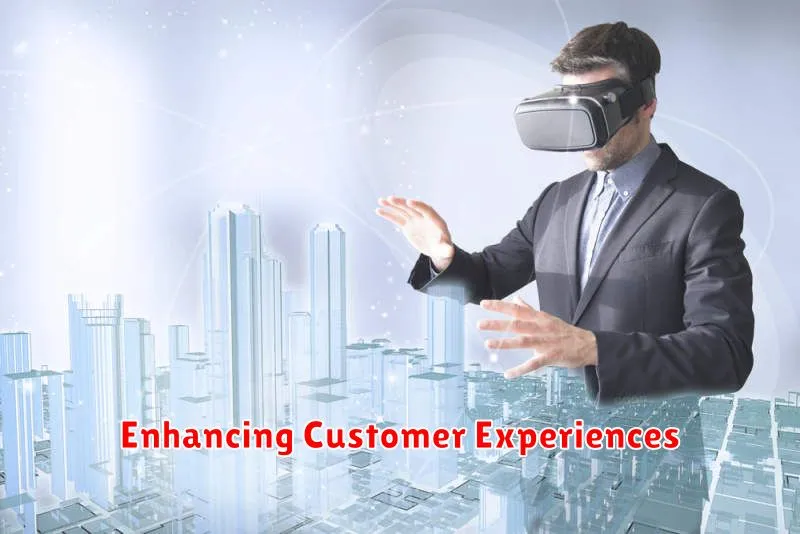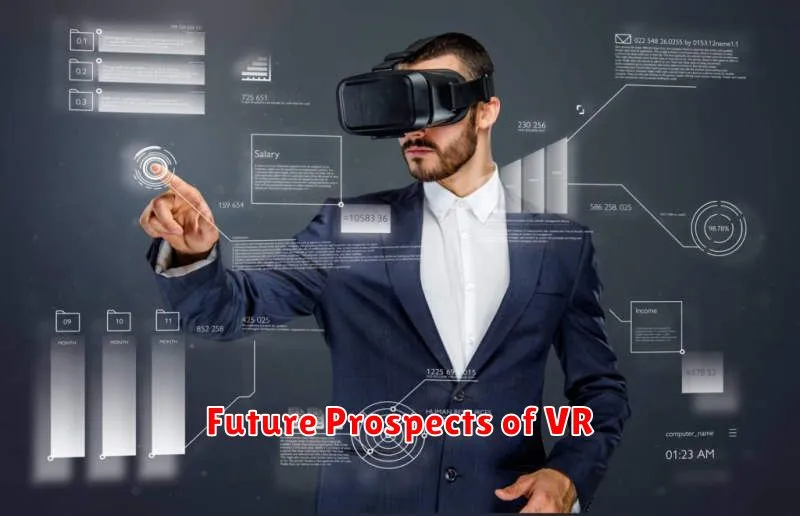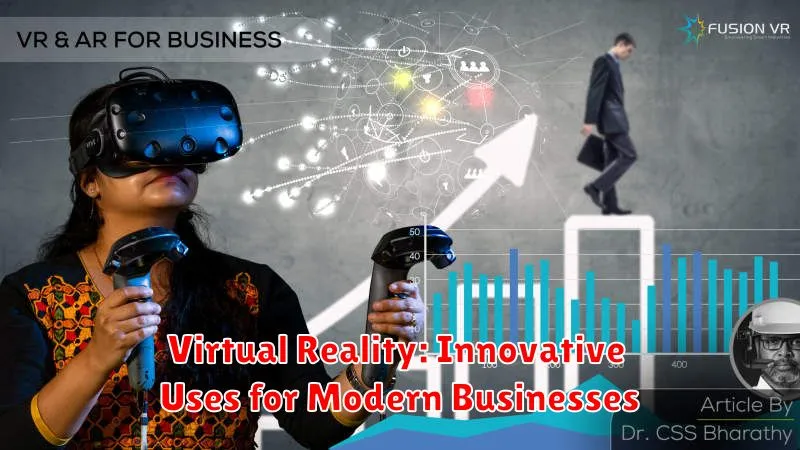Virtual Reality (VR) is rapidly transforming from a niche gaming technology into a powerful tool for modern businesses. VR offers innovative solutions across various sectors, driving efficiency, enhancing training, and revolutionizing customer engagement. This article explores the diverse applications of virtual reality and how it is being leveraged to achieve significant advantages in today’s competitive business landscape. From virtual tours and interactive product demonstrations to immersive training simulations and remote collaboration, VR is reshaping how companies operate and interact with their stakeholders.
The innovative uses of virtual reality are enabling businesses to create immersive and engaging experiences that were previously unimaginable. By harnessing the power of VR, companies can streamline processes, improve communication, and foster deeper connections with their clients. This article will delve into specific examples of how modern businesses are utilizing virtual reality to gain a competitive edge and drive growth. Discover the transformative potential of VR and how it can revolutionize your business operations.
Introduction to Virtual Reality in Business
Virtual Reality (VR) is rapidly transforming the business landscape, offering innovative solutions across various sectors. It provides immersive, interactive experiences that were previously unimaginable, opening doors to new possibilities for enhanced productivity, reduced costs, and improved customer engagement.
VR technology transcends traditional methods by creating simulated environments that replicate real-world scenarios or explore entirely new digital realms. This allows businesses to train employees, design products, and connect with customers in unprecedented ways.
Training Employees with VR
Virtual Reality (VR) offers a transformative approach to employee training. By creating immersive, simulated environments, VR allows employees to practice real-world scenarios without real-world consequences. This is particularly beneficial for roles involving complex procedures or hazardous environments.
VR training can be more engaging and effective than traditional methods. Employees learn by doing, developing practical skills and muscle memory through interactive experiences. This hands-on approach leads to improved knowledge retention and faster competency development.
Furthermore, VR training offers significant cost savings. Businesses can reduce expenses associated with travel, equipment, and materials. The scalability of VR also allows for consistent training delivery across a large workforce.
Enhancing Customer Experiences

Virtual Reality (VR) offers businesses innovative ways to elevate customer experiences. By creating immersive and interactive environments, businesses can deeply engage customers with their products or services.
Interactive Product Demonstrations: VR allows customers to experience products in a realistic, virtual setting before purchasing. This can lead to increased customer satisfaction and reduced purchase hesitancy, particularly with high-value items like furniture or vehicles.
Virtual Tours: For businesses like hotels or real estate agencies, VR can provide potential customers with virtual tours. This gives customers a realistic preview allowing them to explore spaces at their own pace, boosting engagement and potentially driving sales.
Gamified Experiences: VR can transform customer interactions into engaging games. This playful approach can strengthen brand loyalty and create memorable experiences that customers are more likely to share.
VR for Remote Collaboration
Virtual Reality offers innovative solutions for remote collaboration, transcending the limitations of traditional video conferencing. VR enables teams dispersed across the globe to interact within shared virtual environments.
This technology facilitates real-time interaction with 3D models, designs, and data visualizations, fostering a deeper understanding and more effective communication. Imagine architects collaboratively reviewing blueprints in a virtual building, or engineers manipulating a 3D engine model together, regardless of their physical location.
VR collaboration tools offer enhanced engagement and presence, making remote meetings more productive and immersive. This ultimately leads to improved teamwork, streamlined workflows, and faster project completion times.
Design and Prototyping with VR
Virtual Reality (VR) offers transformative potential for design and prototyping processes. Immersive environments allow designers to visualize and manipulate 3D models in real-time, offering a deeper understanding of scale, proportion, and spatial relationships.
This technology facilitates rapid prototyping, enabling businesses to quickly create and test virtual prototypes, identifying potential design flaws early in the development cycle. This significantly reduces development costs and time-to-market.
VR also promotes collaborative design. Teams can work together within the virtual environment, regardless of their physical location, streamlining the feedback and iteration process.
Benefits and Cost Analysis
Integrating virtual reality (VR) offers businesses numerous advantages. Improved training effectiveness, enhanced product design and development, and engaging customer experiences are key benefits.
However, the cost of implementing VR can be a significant consideration. Initial hardware investments, software development, and ongoing maintenance contribute to the overall expenditure.
A thorough cost-benefit analysis is essential. Weighing the potential return on investment against the upfront and ongoing costs is crucial for making informed decisions about VR adoption.
Challenges and Implementation Tips
Despite the numerous advantages, integrating VR presents certain challenges. Cost remains a significant barrier, encompassing hardware, software, development, and maintenance. Technical expertise is essential for successful VR implementation, requiring specialized skills in areas like 3D modeling and software development. Furthermore, user experience can be a significant factor, with potential issues like motion sickness and discomfort affecting adoption.
To effectively implement VR, businesses should focus on several key areas. Clearly define objectives and align VR applications with specific business needs. Thorough planning and testing are crucial for identifying potential issues and ensuring a seamless user experience. Start with pilot programs to assess feasibility and gather user feedback. Finally, prioritize user training and support to ensure smooth adoption and maximize the benefits of VR technology.
Industry-Specific Applications
Virtual Reality (VR) offers transformative potential across diverse industries. In healthcare, VR assists with surgical training, pain management, and rehabilitation. The manufacturing sector utilizes VR for virtual prototyping and assembly line simulations, reducing costs and improving efficiency.
Retail businesses leverage VR to create immersive shopping experiences, allowing customers to virtually try on clothes or visualize furniture in their homes. Meanwhile, the real estate industry uses VR to conduct virtual property tours, enabling potential buyers to explore properties remotely.
Successful VR Business Examples
Several businesses have successfully integrated VR technology into their operations, demonstrating its potential for diverse applications. Retailers are using VR to create immersive shopping experiences, allowing customers to virtually try on clothes or visualize furniture in their homes.
The healthcare industry leverages VR for pain management, surgical training, and rehabilitation. Manufacturing companies utilize VR for training simulations and design prototyping, reducing costs and improving efficiency.
Real estate companies offer virtual property tours, enabling prospective buyers to explore properties remotely. These examples illustrate the transformative power of VR across various industries.
Future Prospects of VR

The future of Virtual Reality (VR) holds immense potential for businesses. Widespread adoption is anticipated across various sectors, driven by advancements in technology and decreasing hardware costs. This will lead to more immersive and interactive experiences for consumers and employees alike.
Key areas of growth include enhanced training simulations, more effective remote collaboration tools, and personalized marketing campaigns that deeply engage customers. VR is also poised to revolutionize product design and development processes, allowing for virtual prototyping and testing.
Furthermore, the integration of VR with other technologies such as Artificial Intelligence (AI) and the Internet of Things (IoT) will unlock new possibilities and applications, paving the way for truly transformative business solutions. Imagine AI-powered virtual assistants within VR environments or IoT-enabled VR experiences that respond to real-world data in real-time.

